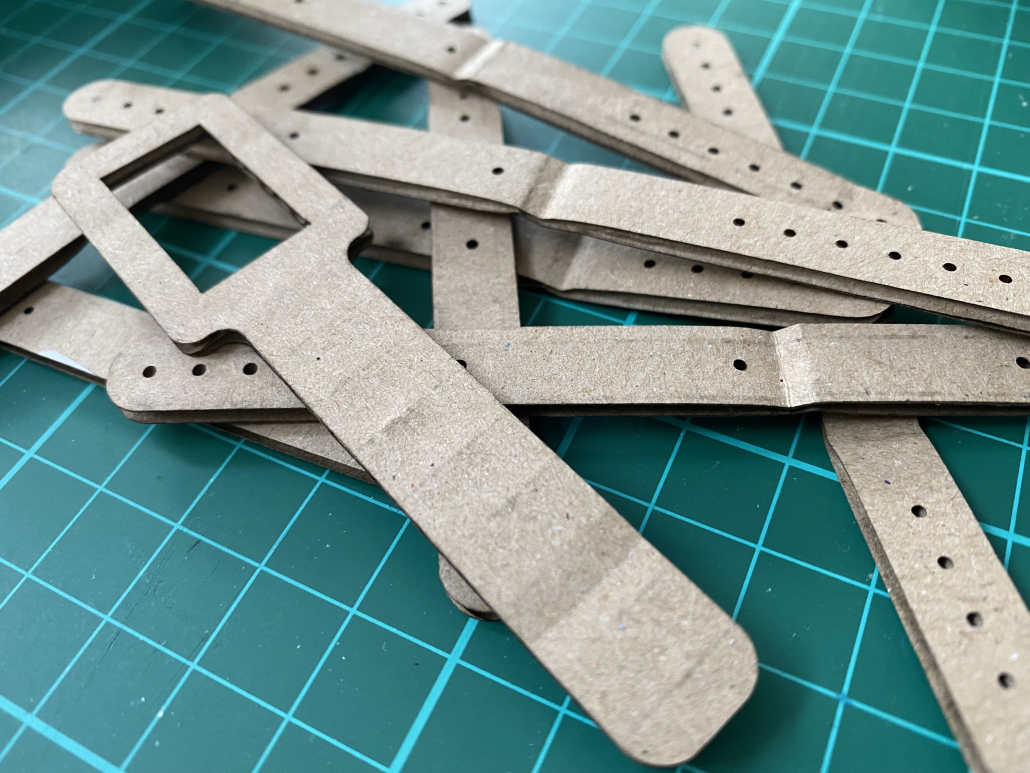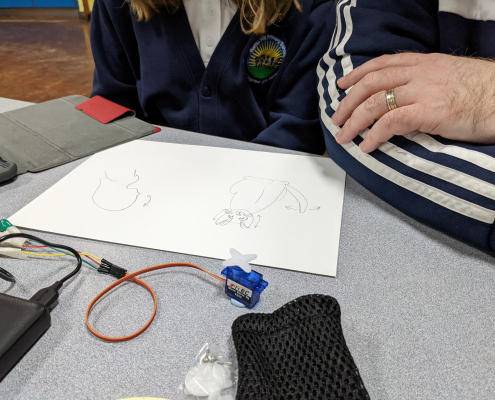Connect : Blog
Updates from the Connect project
Connect is an Internet of Things digital making project, and it’s easy to assume that coding is the hard part. But if we’ve got Connect’s coding system right – and we don’t yet know if we have, but bear with me – then the most challenging part becomes the mechanism. We’ve known this for some time, but getting the programming system even close to right has been a battle. So we’re only now managing to turn our attention to mechanical engineering.
Most of the time, we don’t have to think too much about how different mechanisms work. Yet simple mechanisms are a basic building block of mechanical engineering, and they’re even written into the national curriculum at key stages 1 and 2. Indeed, our resource page is consistently one of the most popular areas of this website, seeing many thousands of views each year.

Simple mechanisms are surprisingly challenging to explore, however – particularly ones which can be operated using little servo motors. Which is why we’ve started exploring with parts like these, above. Based on the dimensions of lolly sticks, they’re neatly drilled so we can use straightened-out paperclips as pivots and linkages.
These test pieces don’t quite work, but we’re making some adjustments and later in the week we’ll try again. Fingers crossed we can bring you some example mechanisms built using these components, which we’ll then roll into the next Connect course.
It’s happening. It’s genuinely happening. More than that – it works!
This half-term we’ve been testing out parts of Connect with some willing guinea pigs families at Battle Hill Primary School. There are a lot of hidden technical bits and some really quite shaky code involved in keeping Connect devices talking to each other (I’m allowed to say that, I wrote the code). We couldn’t quite be certain that once it met real people it would, you know, work. But it does.
 In the very first week one family made the dog in the picture above, which wags its tail when it’s happy and sags rather pathetically when sad. In subsequent weeks families have found out how to code more behaviours into their Connected devices, and explored different mechanisms they might use as they think through what their ultimate creations might be. Here’s a family sketching out a design for a cat puppet, and thinking about how it might move.
In the very first week one family made the dog in the picture above, which wags its tail when it’s happy and sags rather pathetically when sad. In subsequent weeks families have found out how to code more behaviours into their Connected devices, and explored different mechanisms they might use as they think through what their ultimate creations might be. Here’s a family sketching out a design for a cat puppet, and thinking about how it might move.
It’s not all gone smoothly, not least because I contracted covid after the first week and had to isolate for the next two sessions. There are plenty of rough edges for us to smooth off, including literal ones – at one point I spent a happy hour with a stack of microcontroller boards and a nail file.
With some adjustments, we’re pressing ahead with a second pilot at Carville School after half-term, and shortly after that we should have workshops popping up all over the place. Huge thanks to the Battle Hill families for helping us debug the project!
Our friends from the Life Science Centre visited us today, and we spent the day hacking with cardboard and servo motors to make these puppets. We’re terribly proud of them.
These are the first three prototypes of the sort of devices we’ll be making with a few hundred families across the North of Tyne region, over the next few years. Keep your eye on the conNecT project page to find out more. We’re heavily in the development phase of the project now, with workshops due to start around Easter time 2020.
We’ve lots of corners to smooth off between now and then. We’ve really struggled today to find servos in our collection which work reliably with 3.3V devices like the Kniwwelino boards we’re wanting to use. Most of our servos didn’t work with Micro:Bits, either. So we’ve some work to do with our supplier on sourcing servos we trust. Or maybe it’s the power supplies… There’s also a tonne of work remaining on the software stack to make all this easier. It does work, but it currently involves more faffing than we think is necessary: we’re planning to build some custom blocks to make puppets easier to control.
We spent much of the day, however, discussing how we want the workshops to run, and how we think families might feel about different parts of it. The project is intended to find a balance point between technology, engineering and design skills. That’s still elusive, but we’re closer to it than we were.
Also, we have flapping birds and a cat which, for much of the day, responded to ‘sad’ by just tipping itself over and refusing to get back up again. So that’s a good day’s work, we think.
NUSTEM is delighted to partner with the Life Science Centre to deliver Connect.
Connect is funded by the North of Tyne Combined Authority, under their STEM and Digital Skills Programme.